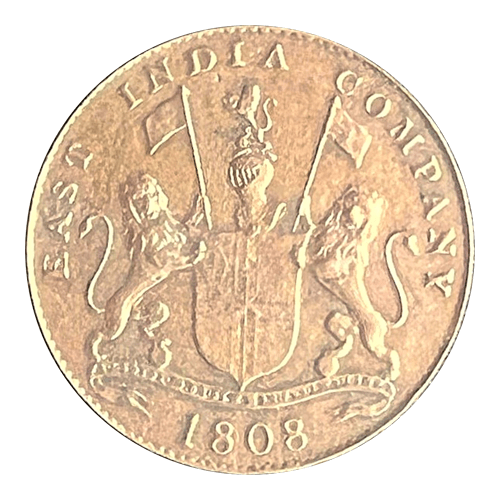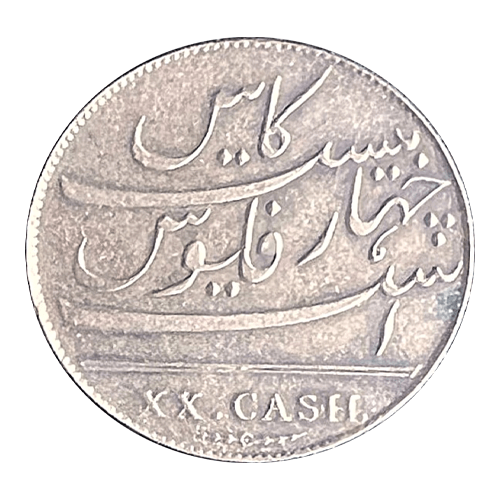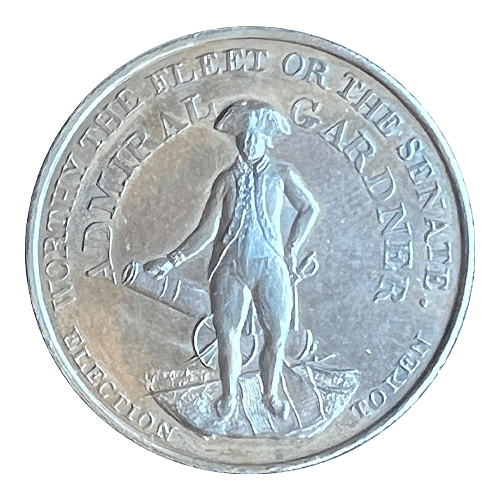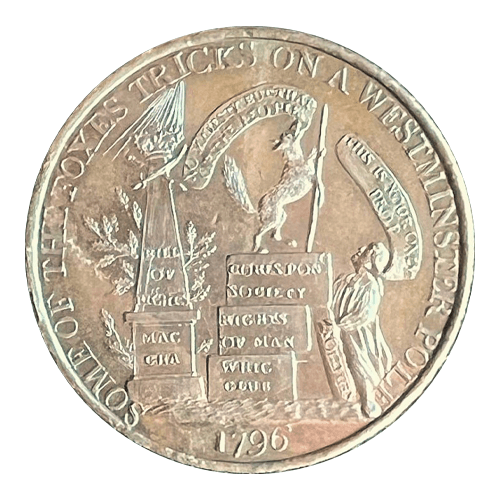Full biography of Admiral Gardner: Lord Alan Gardner
by David Scheeres (Member #242)
Wreck of the Admiral Gardner
Many of us collect shipwreck coins, and for most, a fully dated coin from the 1715 Fleet is a highly coveted prize. However, our fascination with shipwreck coins extends to those recovered from wrecks across different eras and locations. These artifacts open up intriguing fields of study, allowing you to literally collect coins that span from the time of Marc Antony to the modern era.
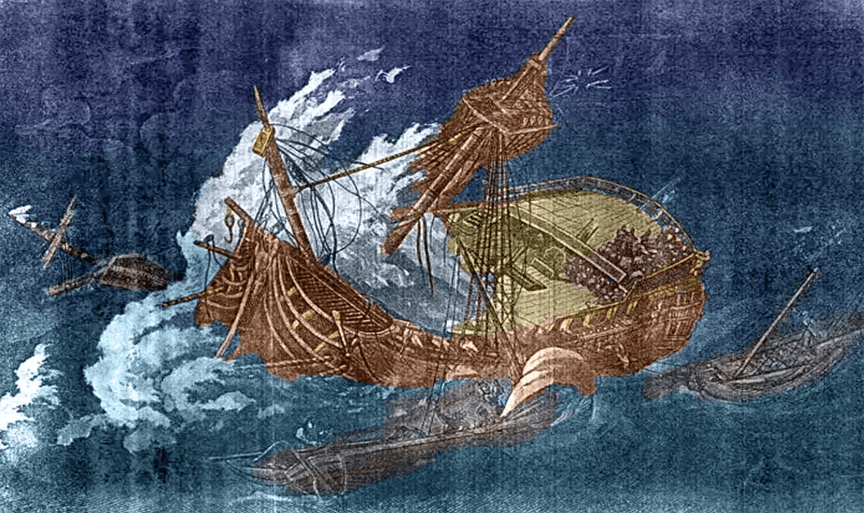
Among the most inexpensive and readily available shipwreck coins are those recovered from the British East India Company vessel, the Admiral Gardner. The story of this ship is a significant maritime event. As an armed East Indiaman, the Admiral Gardner was part of a fleet of ships (a generalized term for any sailing vessel operating under charter to a major European trading power’s East India Company from the 17th to 19th centuries).
The ship was a three-masted vessel boasting 23 guns, with an estimated tonnage of 816 and a length of 145 feet. Constructed in 1796 at Blackwall alongside HMS Venerable, she was named for Baron Alan Gardner (1742–1809). He had a distinguished career in the Royal Navy before becoming a Member of Parliament in 1796.
She had completed five successful voyages since her launch in 1797. However, on January 25, 1809, during her sixth outward-bound journey from Blackwall to Madras and Bengal, she met with disaster. A severe gale drove her onto the treacherous Goodwin Sands, a notorious sandbank off the coast of Kent, England. While many of her crew were rescued, the Admiral Gardner and her valuable cargo were lost to the sea.
The wreck remained submerged and largely forgotten until a fisherman’s nets snagged on the site in 1984, leading to its rediscovery. This prompted salvage operations to begin in 1985. The coins, remarkably preserved, offer a direct connection to early 19th-century maritime trade and colonial history.
Although other artifacts were found, the most significant items recovered from the wreck were the approximately 46 tons of newly minted copper coins, intended for circulation by the East India Company in India. These coins, primarily 10 Cash and 20 Cash denominations dated 1808 and 1809, were struck at the Soho Mint in Birmingham. It is estimated that between 3.6 and 10 million coins were recovered—certainly enough for anyone with even a slight interest in shipwreck coins to own one at a low cost. Many were found in unopened barrels preserved in wax, which is why uncirculated examples are common today.
My coin, shown here, is a typical, well-preserved example. These are often sold in graded holders, and it is not uncommon for the cost of the grading service to exceed the cost of the coin itself.
The Crossover of History
A fascinating crossover exists between shipwreck coins, military careers, and political activism, and Admiral Alan Gardner is a perfect example of this. Admiral Alan Gardner was a pivotal naval officer during the late 18th and early 19th centuries, an era dominated by the formidable might of the Royal Navy. His distinguished career, marked by bravery and strategic acumen, earned him a place among the luminaries of Nelson’s era. Gardner’s active service spanned major conflicts, from the American War of Independence to the protracted struggles against Revolutionary France. He commanded with distinction at the pivotal ‘Glorious First of June’ in 1794, a major naval engagement against the French fleet, and later played a crucial role in the Battle of Cape St Vincent in 1797, a resounding British victory. His unwavering resolve and leadership cemented his reputation as a formidable and respected admiral.
The Conder Penny of 1796
Beyond his direct naval exploits, Admiral Gardner’s name resonated in an intriguing corner of 18th-century numismatics: the Middlesex Conder Penny of 1796. This copper token, distinct from the later shipwrecked cargo, serves as a fascinating example of the political satire prevalent during a period of intense public discourse in Britain. Weighing 22.5 grams and measuring 33.5mm in diameter, the token is substantial, reflecting its role as both unofficial currency and a vehicle for social commentary.
I was lucky enough to find this one in virtually mint condition with much luster.
The obverse of the token displays a dignified naval officer—undoubtedly Admiral Gardner—standing prominently beside a cannon. Encircling this patriotic motif is the bold inscription, “ADMIRAL GARDNER WORTHY OF THE FLEET OR THE SENATE. ELECTION TOKEN.” This legend unequivocally champions Gardner’s suitability for dual service as both a revered naval commander and a sagacious statesman, openly advocating for his political aspirations and seeking public support for his parliamentary candidacy.
This token was minted privately by Matthew Boulton at his Soho Mint.
The reverse presents a more incisive and satirical tableau. A cunning fox, a symbol of political opportunism, is depicted atop three precariously balanced boxes. These boxes bear the names “CORRESPONDING SOCIETY,” “RIGHTS OF MAN,” and “WHIG CLUB,” alluding to radical political factions frequently linked to the revolutionary ideals emanating from France. The fox unfurls a banner proclaiming “NO MAJESTY BUT THAT OF THE PEOPLE,” a sentiment of pronounced anti-establishment leanings for the period.
Further emphasizing the perceived instability of these radical tenets, a figure attempts to support a log inscribed “SEDITION,” uttering, “THIS IS YOUR ONLY PROP.” In stark contrast, a robust monument stands opposite, proudly bearing the inscriptions “BILL OF RIGHTS” and “MAGNA CARTA.” It is surmounted by the traditional symbols of monarchy—a crown, sword, and sceptre. This complex visual narrative asserts that true British liberty and stability are anchored in established constitutional principles rather than revolutionary fervour, offering a clear critique of those seeking to dismantle the existing order.
This token was minted during the height of the Napoleonic Wars, when the French Revolution was still fresh in the minds of the ruling classes. It is worth noting that Gardner was elected as a Member of Parliament for Plymouth in 1796, a major base for the Royal Navy. Unlike many politicians of the era who used “rotten boroughs” to buy votes (a practice that did not change until the 1832 Reform Act), Gardner’s campaign relied on a more legitimate show of public support, with the token serving as a costly but effective campaign tool. As he was elected, clearly, he did not waste his money minting this token!
Gardner’s Legacy
Admiral Alan Gardner is referenced in key historical documents, including “The Dispatches and Letters of Vice Admiral Lord Viscount Nelson,” edited by Sir Nicholas Harris Nicolas. One letter says, “To Commodore Alan Gardner Boreas Nevis 13th May… One other circumstance I must mention which”. In another letter dated May 19, 1803, to Lady Hamilton, Nelson referred to Lord Gardner as a drinker!
He is also cited in O’Byrne’s Naval Biographical Dictionary, a first-rate resource for anyone studying naval officers of this era.
Despite his significant contributions, Gardner’s legacy has become more obscure compared to his contemporaries like Pellew, later known as Lord Exmouth. However, among numismatists, given the vast number of coins salvaged from the Admiral Gardner shipwreck, he is unlikely to be forgotten.

